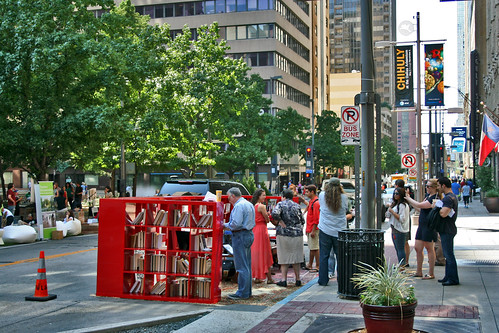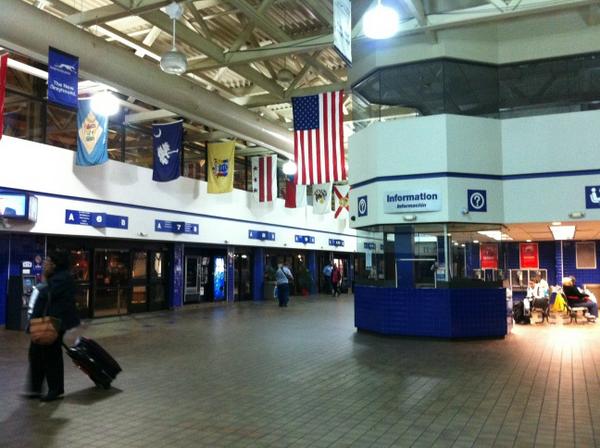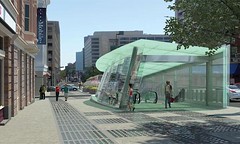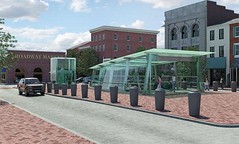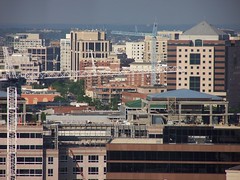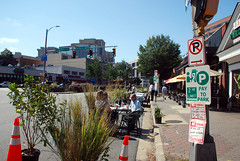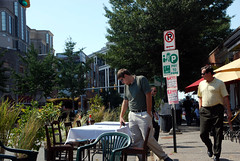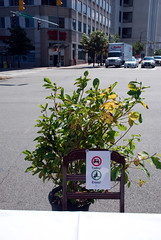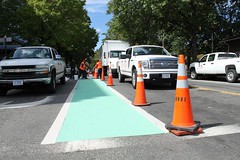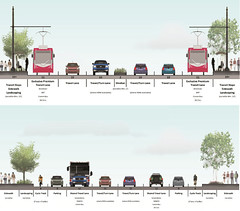|
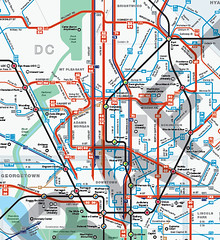
Central DC in WMATA’s new map. |
WMATA’s new bus maps are, in a word, awesome. They are so good, on so many levels. They will make navigating the bus system vastly easier, and less intimidating. But WMATA asked for comments, so I’ll make some.
What’s better
The main problem with WMATA’s old bus maps were that they were so complex that reading them was essentially impossible. WMATA has so many criss-crossing bus routes, all illustrated identically, that riders had to already be familiar with a bus route in order to use the maps. That dissuaded a lot of people from using WMATA buses, or from using them more extensively.
The main improvement of these new maps is that everything looks simpler. Individual routes are vastly easier to follow, thanks to more variety in line color, thickness, and improved spacing.
The best single new feature is that the best bus routes are highlighted with a thicker line, so it’s easier for riders to find the routes that are most convenient. This is exactly the reason why I published my own 15 minute bus map earlier this year. WMATA’s new maps are better than my version though, because they offer so much more information while still clearly highlighting the frequent network.
WMATA’s PlanItMetro blog has several further examples of how these new maps are more clear. For example, compare how the old and new maps illustrate the area around Greenbelt Metro station:
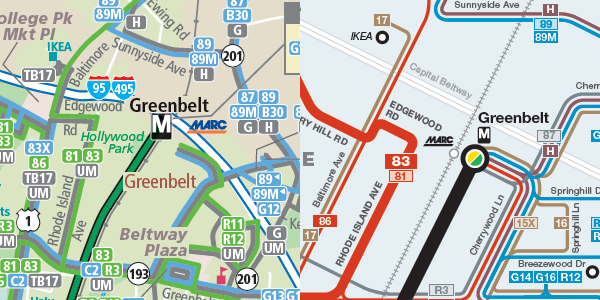
Old on the left, new on the right.
Good luck reading the version on the left.
What needs improvement
There are two big problems with the details of how these maps highlight the best routes.
The first is that some of the best bus routes in the region are hard to find on the maps. DC Circulator, Bethesda Circulator, and the King Street “trolley” shuttle all offer extremely good service, but are shown as minor routes on the map because they aren’t run by WMATA.
Failing to show non-WMATA buses in a fair way is a disservice to riders, and is counterproductive to the goal of encouraging overall transit ridership. WMATA exists in order to serve the needs of the DC region. What’s most important is a complete picture of transit services, regardless of who operates them. Self-serving parochialism should not be WMATA’s mindset.
The second problem with the way the new maps highlight good routes is that the standards for what qualifies as a highlighted route in Northern Virginia are too low. This unnecessarily clutters the Northern Virginia map, and doesn’t give riders accurate information.
Here’s part of the Northern Virginia map. There are so many thick red lines that it’s very difficult to follow them, which defeats the point of having them in the first place.
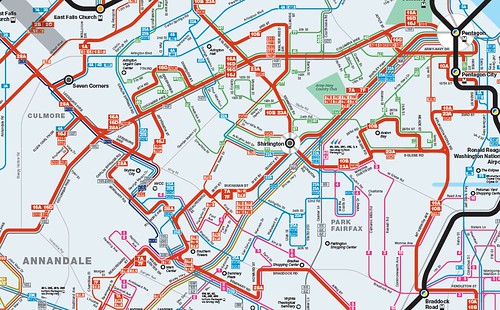
Northern Virginia, too cluttered.
Some of those “frequent” bus routes only come every 1/2 hour at off-peak times of day. Some of the others are branches that should be shown with a thin red line. Meanwhile the 9S, which is one of the most frequent routes in Virginia, doesn’t have a line at all.
Compare that Northern Virginia map with the Montgomery County version, which shows highlighted thick red routes much more clearly. The standards for a thick red line on the Montgomery County map are tight enough to keep them clear. The standards on the Virginia map are too low, resulting in a cluttered and less usable map.
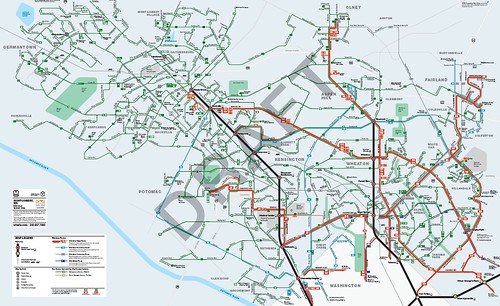
Montgomery County. The right half is good, but the left half needs work.
On the other hand, the Montgomery map has another problem. Look at Gaithersburg and Germantown, which take up the left half of that map. All the routes there are shown with the same kind of line because they’re all pretty similar, but that makes them hard to tell apart on the map. And since Gaithersburg and Germantown have twisty suburban streets rather than planned grids, the new map’s geographic distortion makes it harder rather than easier to read.
Recommendations
1. Add a middle thickness line weight and use it to highlight non-WMATA frequent routes, as well WMATA routes in the suburbs that need to be called out as “major”, but that don’t offer really frequent service. This will better illustrate the important non-WMATA routes, and improve the visual hierarchy in suburban areas, which are currently shown with either too many or too few highlighted routes. This will also better inform riders about the quality of routes.
2. Add more geographic clues in areas with a lot of homogenous routes that are difficult to distinguish, such as Gaithersburg and Germantown.
3. Add names to MARC and VRE station labels.
4. Make a single regional map available. There are good reasons to keep separate maps for DC, Montgomery, Prince George’s, and Virginia, but there’s no good reason not to publish a single overall map as well.
5. A really great next step would be to make these interactive maps, instead of pdfs. I’d love to be able to see individual routes highlighted separately whenever I hover my cursor on them, and then go to the timetable with a click.
Send WMATA your own comments
To make sure WMATA planners read your thoughts, leave them in the comments section of the PlanItMetro blog.
Average Rating: 4.8 out of 5 based on 260 user reviews.
